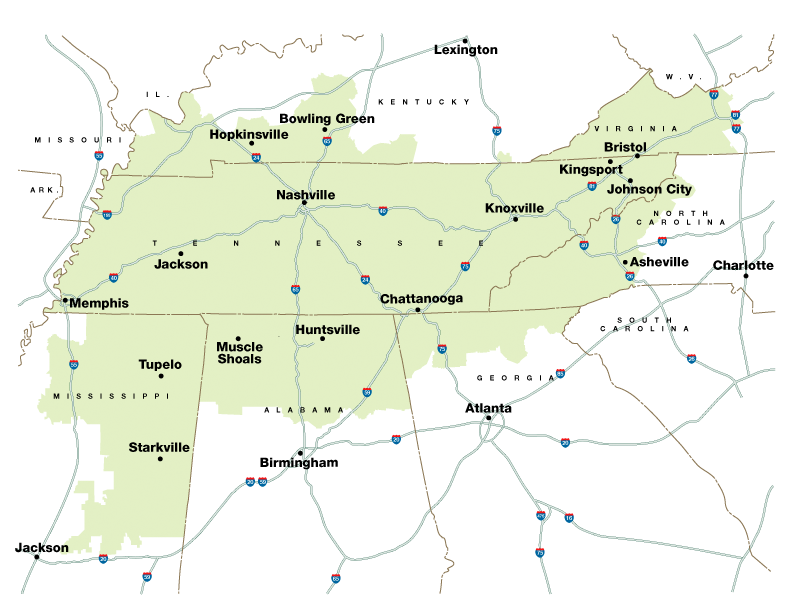By Isaac Orr
A couple of months ago, Storm Elliot caused rolling blackouts in several Southern states. Luckily, most of Mississippi avoided power outages, but portions of Northeastern Mississippi that get their power from the Tennessee Valley Authority (TVA) experienced losses of electricity as TVA was forced to cut power to residents for the first time in its 90-year history.
To ensure nothing like that happens again, now might be the time to ask what we need to do to ensure that we have a reliable grid for the future. That means questioning some of the claims made by the wind and solar lobby as to the reliability of renewable energy.
Blackouts occur when there is not enough electricity supply on the grid to meet demand. This is a real challenge for energy companies, not least because electricity is consumed instantaneously. The grid is not a storage device, like a giant bathtub that fills with electricity for later use.
TVA experienced blackouts during Winter Storm Elliot because electricity demand far exceeded supply forecasts, and some coal and natural gas plants had unexpected problems causing them to go offline.
On the demand side, TVA set new all-time high power generation records on Friday, December 23rd, 2022, and it still wasn’t enough to keep up with demand on its system, forcing the company to initiate rolling outages for two hours and fifteen minutes.
According to Bloomberg, electricity demand surpassed expectations in part because there was a massive shift toward electric heating from 2009 to 2020. Demand also exceeded expectations due to a lack of historical data for similar cold snaps in December.
On the supply side, TVA experienced 6,000 MW of outages at power plants that resulted in the shortfall in supply. The Cumberland coal plant, a 2,500 MW facility owned by TVA, tripped offline due to frozen instrumentation, and a natural gas flows from Appalachia to the Tennessee Valley fell by half as a result of mechanical problems with pipelines, according to data analysis from BloombergNEF.
These factors converged to cause the Christmas Blackouts. However, if we learn the wrong lessons from Winter Storm Elliott, we will spend billions of dollars without reducing our risk of blackouts during future winter storm events.
Wind and solar advocates have correctly identified the problems that occurred with these specific coal and natural gas plants during Elliott, but they have offered “solutions” that are expensive, unreliable, and entirely unsatisfactory. In essence, they are faulting coal and natural gas power plants for not being dispatchable enough while simultaneously promoting energy sources that are not dispatchable at all.
For example, in the wake of the storm, RMI argued that building large, interregional transmission grids and more wind turbines would have helped alleviate the magnitude and duration of blackouts in the Southeast, which is plausible, but their implication that such a strategy could prevent blackouts in the future is misguided.
Becoming more reliant upon interregional transfers of wind energy will not necessarily shore up Mississippi’s electric grid during future winter storms because wind turbines in the Upper Midwest shut down when temperature dip below -22° F to prevent the turbines from sustaining damage.
This means that if we get an even colder winter storm, we can’t necessarily depend upon the wind fleet in the Upper Midwest to perform as well as it did during Elliott. Adding more solar to Mississippi’s grid will also be of limited value in future winter storms because winter peak electricity demand tends to occur at night—when the sun isn’t shining— but temperatures are coldest and demand for home heating is high.
Winter storms like Uri and Elliot have shown that fuel supplies for natural gas power plants can be compromised during extreme cold weather events. As our grid has moved away from coal and nuclear plants with onsite fuel storage, we have also increased our risk of blackouts.
To increase grid resiliency, regulators should consider requiring onsite fuel storage at natural gas plants—whether that be liquefied natural gas or oil at dual fuel plants—to ensure that grid reliability is not compromised by fuel supply interruptions. This strategy kept the lights on in New England while TVA was issuing rolling blackouts.
Winter Storm Elliott will be a lesson learned for future forecasting, but with the rapid electrification of the home heating sector, it is becoming increasingly clear that Mississippi and other states will need more dispatchable power plant capacity on its system to handle increasing electricity demand, not less.
Proposals to reduce the risk of power outages by building more wind and solar facilities are opportunistic attempts to “both sides” the reliability debate and draw false equivalencies about the relative reliability of wind and solar to dispatchable energy sources like nuclear, coal, and natural gas.
Resources are finite, so energy regulators must prioritize solutions like onsite fuel storage that will provide the highest value for the lowest cost. If we learn the wrong lessons from Elliott, then we will find ourselves in the same situation during the next winter storm event.
Isaac Orr is a policy fellow specializing in energy and environmental policy at the Center of the American Experiment.
